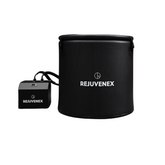How Long Should You Stay in an Ice Bath?
Ice baths, or cold water immersion therapy, have gained significant popularity among athletes, fitness enthusiasts, and wellness seekers. They are celebrated for their ability to reduce inflammation, promote recovery, and even improve mental resilience. However, one of the most common questions is: How long should you stay in an ice bath? The answer depends on your goals, experience level, and the temperature of the water. In this article, we’ll explore the recommended durations for ice baths, their benefits, potential risks, and tips for optimizing your cold therapy experience.
What Is an Ice Bath?
An ice bath involves immersing your body in cold water (typically between 10°C and 15°C) for a short period. This practice is known as cold water immersion (CWI) and has been used for decades to aid muscle recovery and reduce inflammation. The cold water constricts blood vessels, reduces blood flow to the skin, and helps flush out lactic acid from muscles. Once you exit the bath, your blood vessels dilate, promoting oxygen-rich blood flow to your tissues.
How Long Should You Stay in an Ice Bath?
The ideal duration for an ice bath varies depending on the water temperature and your experience level:
|
Water Temperature (°C) |
Recommended Duration (Minutes) |
|
10°C–15°C |
10–15 minutes |
|
8°C–10°C |
8–10 minutes |
|
5°C–8°C |
5–8 minutes |
|
Below 5°C |
Not recommended for beginners |
Key Guidelines
-
Beginners: Start with shorter durations (1–2 minutes) at warmer temperatures (around 15°C). Gradually increase time as your body adapts.
-
Experienced Users: Aim for 10–15 minutes at temperatures between 10°C and 12°C.
-
Safety First: Always listen to your body. If you feel numbness, dizziness, or extreme discomfort, exit the bath immediately.
Benefits of Ice Baths
Ice baths offer a range of physical and mental health benefits when practiced correctly:
1. Reduces Muscle Soreness
Cold exposure constricts blood vessels and reduces inflammation, helping alleviate muscle soreness after intense workouts.
2. Improves Recovery
By flushing out toxins and lactic acid from muscles, ice baths accelerate recovery time for athletes.
3. Enhances Mental Resilience
Immersing yourself in freezing water trains your nervous system to handle stress better. This can improve your response to challenging situations over time1.
4. Boosts Circulation
The alternating constriction and dilation of blood vessels improve overall circulation and cardiovascular health.
5. Promotes Better Sleep
Cold therapy has been linked to improved sleep quality by calming the nervous system and reducing stress hormones.
Potential Risks of Ice Baths
While ice baths have numerous benefits, they are not without risks:
-
Hypothermia: Prolonged exposure can lower your core body temperature dangerously.
-
Skin Damage: Frostbite or skin irritation can occur if you stay in extremely cold water for too long.
-
Heart Stress: Cold exposure increases heart rate and blood pressure, which may be risky for individuals with heart conditions or hypertension.
-
Breathing Difficulties: Sudden immersion can cause hyperventilation or dizziness.
Always consult a healthcare professional before incorporating ice baths into your routine if you have pre-existing medical conditions.
How to Prepare for an Ice Bath
Preparation is key to maximizing benefits while minimizing risks:
-
Hydrate: Drink plenty of water beforehand to prevent dehydration.
-
Warm Up: Perform light exercises to get your blood flowing before immersion.
-
Set a Timer: Use a timer to avoid staying in too long.
-
Gradual Entry: Ease into the bath slowly to let your body acclimate.
-
Have Warm Clothes Ready: Prepare a towel or robe to warm up immediately after exiting.
Ice baths aren’t just for athletes—they can be a valuable tool for anyone looking to improve their physical and mental well-being. Regular cold water immersion has been linked to reduced stress levels, improved immune function, and even enhanced mood due to the release of endorphins. Incorporating ice baths into your routine can also complement other recovery practices like stretching, massage, or meditation, creating a holistic approach to health and wellness.
For those who want to take their recovery to the next level, combining ice baths with other therapies—such as infrared saunas or compression therapy—can amplify the benefits. Alternating between hot and cold therapies, for instance, can further boost circulation and muscle recovery. If you’re new to these practices, starting with professional guidance can help you maximize results safely.
Why Choose Rejuvenex.au for Your Recovery Needs?
If you’re looking for expert guidance or premium recovery solutions, Rejuvenex.au is your trusted partner. They specialize in cutting-edge wellness therapies, including ice baths, infrared saunas, and cryotherapy. Whether you’re an athlete or simply someone seeking better health, their tailored programs are designed to meet your unique needs.
Visit Rejuvenex.au today to explore their range of recovery services and book your session. Take the first step toward faster recovery and improved well-being with the experts in holistic health solutions!
FAQs
1. How often should I take an ice bath?
For most people, taking an ice bath 1–3 times per week is sufficient for recovery and health benefits.
2. Can I take an ice bath after every workout?
Yes, but it’s best suited for high-intensity workouts or competitions where recovery speed is crucial.
3. Are ice baths safe during pregnancy?
Pregnant individuals should avoid ice baths unless approved by their healthcare provider.
4. Can I combine ice baths with hot therapy?
Yes! Alternating between hot and cold therapy (contrast therapy) can enhance circulation and recovery.
5. What should I do after an ice bath?
After exiting the bath:
-
Dry off immediately.
-
Warm up with light movement or a warm drink.
-
Avoid prolonged exposure to cold environments.
Conclusion
The optimal duration for staying in an ice bath is typically between 10–15 minutes at temperatures ranging from 10°C to 15°C. Beginners should start slow with shorter durations and warmer temperatures before gradually increasing their tolerance over time.
While ice baths offer incredible benefits—such as reduced inflammation, faster recovery, improved circulation, and enhanced mental resilience—they also come with risks if not done properly. Always listen to your body and consult a healthcare professional if you’re unsure about incorporating cold water therapy into your routine.
Ready to take the plunge? With proper preparation and mindful practice, ice baths can become a powerful tool in your wellness arsenal!




